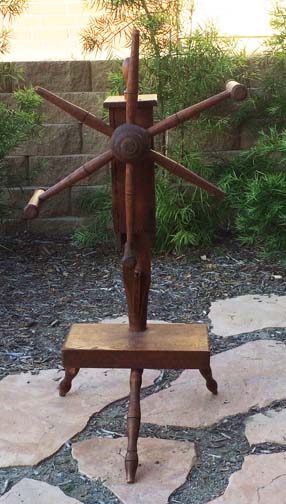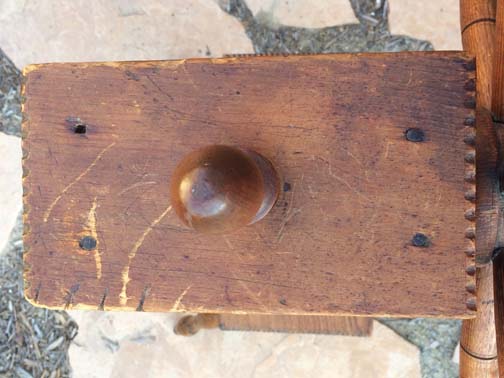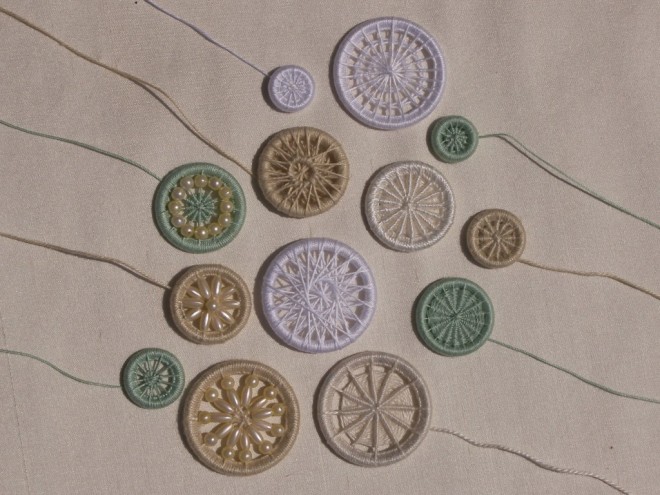
Walked into a local thrift store looking yesterday and saw this! Thinking to myself, “Is this an antique yarn winder?” I checked the item over. Looking at the constructing, including square nails, I knew it was old and had to have it! $30, I think it’s a bargain. I figured The Hubs could make new ends to the spokes.

Aren’t the square nails wonderful! Look at the aged top of this piece.
Curious about the item, I did an online search, and was so excited to finds pictures of this item. It turns out that this is a Spinning Weasel. Know the song, “Round and round the mulberry bush, the monkey chased the weasel. The monkey thought it all was a joke. Pop, goes the weasel!”(I know, I know, some people think it refers to cobblers tools.) See the top knob? That’s the weasel. I’m so excited! This was made in the 1800’s. In one picture, someone had engraved 1843 into the wood on the base.
Spinner’s weasel or clock reel is a mechanical yarn measuring device consisting of a spoked wheel with gears attached to a pointer on a marked face (which looks like a clock) and an internal mechanism which makes a “pop” sound after the desired length of yarn is measured (usually a skein). The pointer allows the spinner to see how close she/he is to reaching a skein. The weasel’s gear ratio is usually 40 to 1, and the circumference of the reel is usually two yards, thus producing an 80-yard skein when the weasel pops (after 40 revolutions).[1][2][3]
Some reels or skein winders are made without the gear mechanism. They perform the same function, but without the “clock” or pop to aid the spinner in keeping track of the length of thread or yarn produced. …[4][5]

See the yellow arrow, that piece that “clicks” against the gear inside is broken. I need to find out how long and what shape that needs to be so it can be repaired!
The way it works, is that when the yarn is spun onto the spool, the end is tied to one of the spoke ends. The spinner then revolves the spokes until the mechanism “pops”. How totally cool. I wish I could just touch the item and visualize it’s entire history.
 Go have a wonderful, happy, crafty day.
Go have a wonderful, happy, crafty day.





















